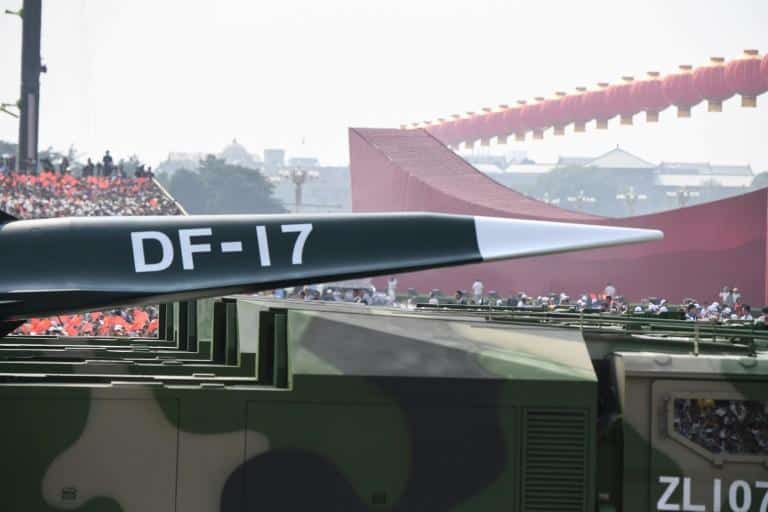Each year, the United States Secretary of Defense publishes to Congress, a report on security and technological developments in the People's Republic of China. Over the past few years, this report has become more and more pressing on many aspects, such as the construction and rapid implementation of denial of access means on the Chinese coasts and in the China Sea, the extension of the Beijing fleet, as well as the profound changes taking place within the People's Liberation Army. For the first time this year, when tensions between Washington and Beijing are at their highest, the report explicitly states that the United States has lost the technological and operational advantage to China in certain areas, such as anti-aircraft and anti-missile defense, combat drones, ballistic weapons and cruise missiles, and, as we had already dealt with a few days ago, in the field of the military naval industry.
In addition to these areas in which Chinese military-industrial dynamism effectively surpasses that of the United States without the slightest possible challenge, the report also highlights several notable advances underway or planned by Beijing for the years to come. Among them, the DoD estimates that China will double the number of nuclear warheads in the next decade serving in its armed forces, which will increase from 200 to 400 nuclear warheads by 2030 according to US analysts. While this number will remain much lower than the 3600 nuclear warheads available to Washington and Moscow, it nevertheless represents a source of concern for the DoD, which fears a resumption of the arms race, and in particular concerning nuclear weapons in the world. Despite American pressure, the Chinese authorities do not want to join the New Start agreements between the United States and Russia, which would limit its own capacity to increase its nuclear arsenal, judging, probably with good arguments, that the two countries already have an excessive nuclear advantage vis-à-vis the geopolitical reality they represent. Recall, as such; that China today has fewer nuclear warheads than France, which has 300 weapons, and roughly the same number as the United Kingdom, which has 215.

The report also attempts to describe the evolutions underway within the PLA in terms of doctrine, which passes, like that applied in the United States and in Europe, from an "info-centered" doctrine to a doctrine centered around shared intelligence, making extensive use of Artificial Intelligence, Cloud Computing, Big Data and, of course, communication networks. This change is of particular concern the Pentagon, which has made this doctrine the heart of its operational advantage for the coming years. It seems, therefore, that Beijing is determined not to let Washington take the lead in this area. Therefore, the potential balance of power between the armed forces of the two super-powers will be assessed, like what was done in the past, especially on the basis of digital forces, no actor having an advantage. technological or doctrinal sufficiently marked to make a difference.
There remains, of course, the experience of combat and large-scale military operations, an area in which the American forces have a very clear advantage over the Chinese forces, which have not known any major engagement since the Sino-Vietnamese war of 1979. Thus, in the naval field, if Beijing does indeed have a higher number of ships and submarines in service, with 350 units against 293 for the US Navy, the experience of the Chinese Navy in terms of operation naval or effective power projection is very limited, if not zero. Indeed, even today, its large naval units operate very rarely outside the coverage area of Chinese aviation. Likewise, the Chinese Navy has had little opportunity to train with experienced major navies outside the Russian Pacific Fleet. However, nothing guarantees that the experience acquired by the Western fleets in these fields will be of a nature to compensate for the growing numerical inferiority vis-à-vis China, which, moreover, has every chance of operating, indeed, closer to its ratings than those of the United States.

In any case, the report presented by the DoD this year to Congress shows that, from now on, China is undoubtedly a most serious competitor, and a potential adversary to be feared if a conflict were to break out, requiring rapid adaptations of the parties. American forces, so as not to find themselves quickly left behind in several critical areas. He also calls for the American Defense doctrine to be articulated from now on with the objective of countering Chinese military power, like the Chinese doctrine, designed to gain the advantage, over time, over the United States. United and their allies. In this, he joins the reflections in progress, whether at the Pentagon, in the US Navy, the US Air Force and the Marine Corps, all paying great attention to current and future developments within the armed forces. of Beijing, and the solutions to be implemented to be able to neutralize them. While the defense budget of the United States has already reached a ceiling which is not expected to change, the margins for maneuver, for the military as for the American parliamentarians, are now very narrow. Obviously, as we titled a few months ago, Beijing has indeed surprised the United States in terms of military power.

